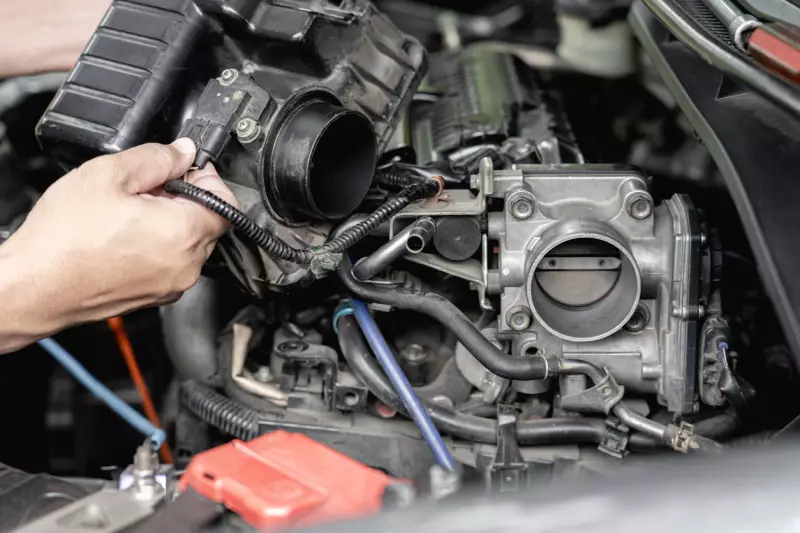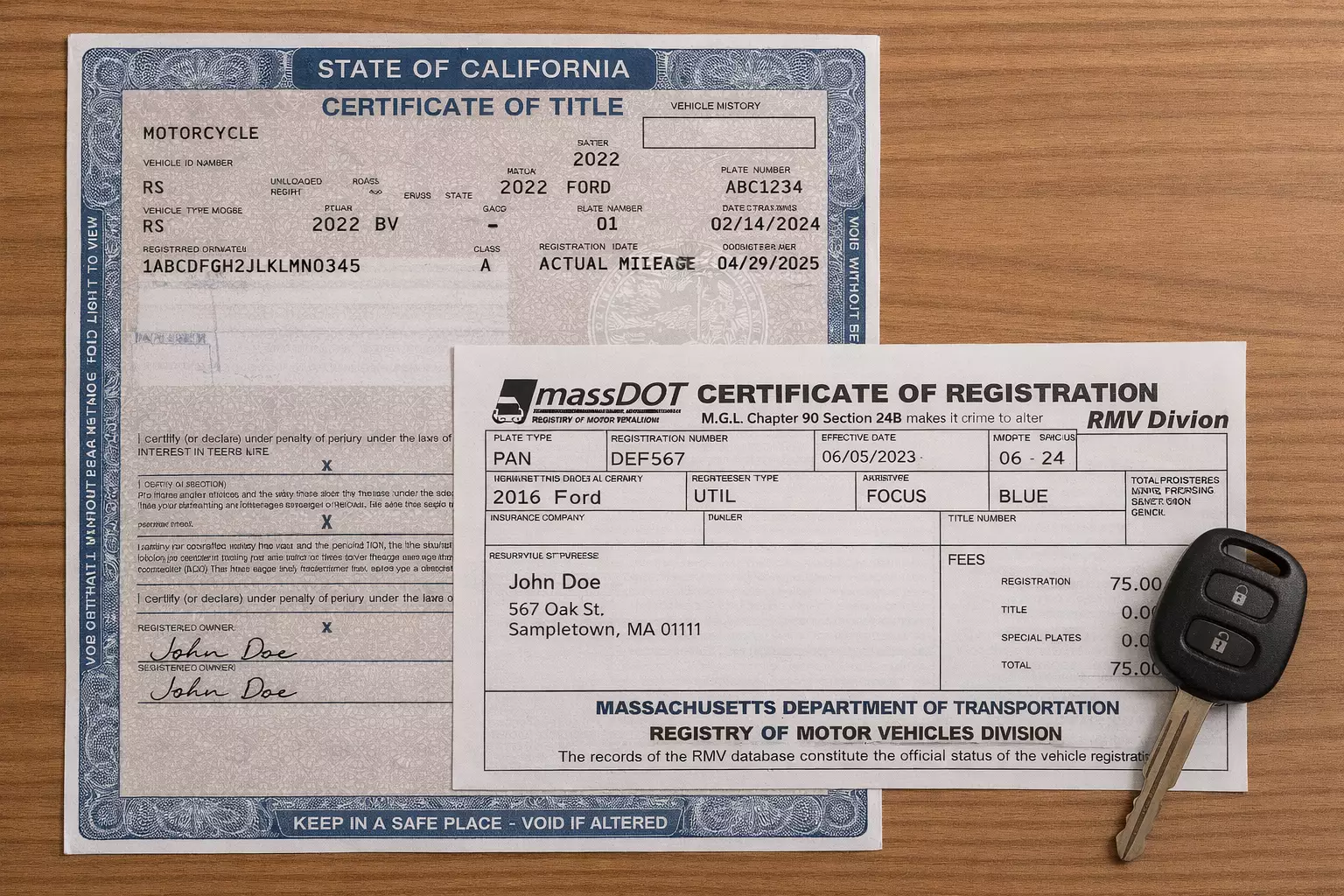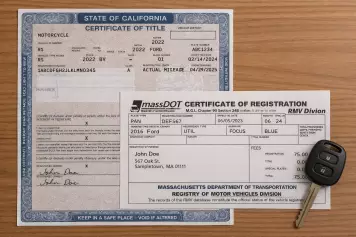The idle air control (IAC) valve is a device attached to a vehicle engine’s throttle body that regulates its idle speed and ensures that it remains on and running smoothly when the vehicle is idling. The IAC valve is vital in ensuring smooth and stable engine operation when cars are idling (either in traffic or parked with the engine running). However, this valve can get clogged over time; when this happens, you may start to experience difficulty starting your car, uneven idling, and occasional backfiring. You can prevent these problems and also enhance your vehicle’s performance, drivability, and fuel efficiency by regularly cleaning your IAC valve and testing it periodically to ensure it's still operating optimally.
We will explain exactly what the idle air control valve does and provide step-by-step guidelines for cleaning and testing this valve:
What Is an Idle Air Control Valve?
The idle air control valve is a crucial part of modern engines, especially those using an electronic fuel injection system. Its primary function is to regulate the engine's idle speed; the idle air control valve does this by controlling the amount of air entering the engine when it's idling. During idling conditions, the engine’s throttle body is closed; however, it remains running without any throttle input and needs a small amount of air to maintain a steady idle speed. The IAC valve acts as a bypass that allows this air to get to the engine (even though the throttle body is closed) and regulates the amount of air that gets through. This regulated airflow ensures that the engine maintains a consistent idle speed regardless of engine load, temperature, or altitude. It also allows the driver to manage the vehicle's RPM (revolutions per minute) based on their needs.
The IAC valve is essential for smooth and reliable vehicle operation; without a functioning idle control valve, the engine may experience RPM fluctuations, eventually leading to rough idling, stalling, and engine shutdown.
Where Is The Idle Air Control Valve Located?
A vehicle's IAC valve is typically located within its engine compartment. Depending on the vehicle's age, make, and model, this idle control valve may either be on the intake manifold near the back of the throttle body (for newer vehicles) or directly on the throttle body (for older ones).
What Happens When the Idle Air Control Valve Goes Bad?
IAC valves can go bad for three main reasons: dirt and debris buildup, electrical problems, and faulty engine control modules (ECM). Several noticeable symptoms indicate that your vehicle's idle air control valve may be going bad or malfunctioning. These include:
- Erratic Idle Speed: the IAC valve regulates the amount of air entering your engine when it's idling; a bad IAC valve means that too much or not enough air will get to the engine. This unregulated airflow can result in inconsistent idle speeds and fluctuating RPMs, which typically cause the vehicle to vibrate or shake noticeably while stationary.
- Check Engine Light: a malfunctioning IAC valve affects your engine’s performance, resulting in your check engine light turning on. Note that the check engine light does not provide specific information about the problem; however, depending on your vehicle's make and model, your engine control module may display a trouble code that can be interpreted.
- Engine Stalling: if your engine suddenly stalls or shuts off unexpectedly, especially when you are coming to a stop or have been idling for a while, it is very likely that your air control valve is bad. These unexpected stalls and shut-offs can pose a safety hazard, especially in bad traffic conditions.
- Surging or Hesitation: if an engine’s IAC valve is no longer regulating air flow properly, it may exhibit surging or hesitation during acceleration. This can eventually lead to uneven power delivery and unresponsiveness when you floor the throttle.
- Backfiring: if you notice backfiring when you take your foot off the gas to slow down, there is a huge chance that your idle air control valve is bad.
- Engine Starting, Then Dying: a faulty IAC valve can cut off airflow to your engine and starve it of oxygen. This, in turn, makes combustion (within the engine) difficult – when combustion cannot properly occur, the engine dies.
It is essential to address any symptoms of IAC valve failure you notice as soon as possible to prevent further damage to your vehicle and maintain its overall performance. Some consequences of neglecting or ignoring malfunctioning idle air control valve symptoms include:
- Engine Damage: a faulty IAC valve typically causes erratic idle speeds and stalling, which puts extra strain on your engine. Over time, this added strain can lead to premature wear, tear, and damage, resulting in costly repairs and potential engine failure.
- Reduced Fuel Efficiency: a faulty IAC valve leads to decreased fuel efficiency and increased fuel consumption, which results in higher fuel costs.
- Safety Hazards: a faulty idle control valve can severely limit the amount of air entering the vehicle’s engine, resulting in combustion failure and engine stalling. Having your engine stall in bad traffic conditions can be potentially dangerous.
- Emissions Noncompliance: a malfunctioning IAC valve can affect the engine's ability to properly control emissions and potentially cause your car to fail local, state, or federal emissions tests. This, in turn, can lead to fines and other sanctions.
How to Clean Idle Air Control Valve

Periodically cleaning your idle air control valve goes a long way in ensuring that your engine performs properly. You will need a carbon cleaning product specifically designed for IAC valves to perform this task. Common examples of these kinds of products are:
- 3M Intake Cleaner Kit
- ATP Intake Blast Complete Intake Cleaner
- CRC Throttle Body and Air Intake Cleaner
- Berkebile Oil 2 + 2 Air Intake Cleaner
- Berryman B-12 Chemtool Fuel Injector Cleaner
- WD-40 - 300134 Specialist Carb/Throttle Body and Parts Cleaner
Other tools and materials required include clean rags, work gloves, a socket wrench set, and a screwdriver. It is also a good idea to get a new gasket (and seals) to replace the old one; this helps prevent the valve from leaking.
Once you have these materials ready, you can clean the IAC valve by taking the following steps:
- Make sure that the engine is turned off and cooled down.
- Locate the idle air control valve - it is usually on the intake manifold near the back of the throttle body or directly on the throttle body (for older model vehicles).
- Detach the intake hose from the throttle body (it is usually fastened with screws).
- Disconnect the vehicle's battery cable by removing the negative terminal.
- Loosen the screws that secure the idle control valve to the throttle body. Be sure to use an appropriate screwdriver for this.
- Disconnect the electrical wires attached to the valve by disconnecting the electrical plug.
- Remove any hoses and clamps connecting to the IAC valve.
- Remove the gasket from the valve and note its position so that you can place the new gasket correctly.
- Clean the valve by spraying carbon cleaner into it to remove dirt and grime. Follow the cleaner's instructions to thoroughly remove this dirt and grime, especially around the valve's pintle and passages, and wipe away excess moisture with a clean rag.
- Use another clean rag sprayed with the carbon cleaner to clean the intake manifold and throttle body. Allow time to dry.
- Place the new gasket onto the IAC valve and carefully remount it into its original position. Tighten the screws and bolts securely using the correct screwdriver and wrench.
- Reconnect the electrical plug and all hoses previously detached. Then, reattach the vehicle's battery cable to the negative terminal.
- Start the vehicle and let it run for about 15 minutes to confirm that the idle air control valve is functioning properly. Check for any abnormal idle behaviors or warning lights. Double-check all connections and fasteners to ensure everything is properly tightened and secured.
The engine should idle steadily, and any abnormal noises it was making previously should stop. However, if the problem continues, consult a qualified mechanic to diagnose the issue and either replace the IAC valve or address other underlying problems.
Be aware that this is a general guide for cleaning your IAC valve; always refer to your vehicle’s service manual for specific instructions and precautions for performing this task.
How to Test Idle Air Control Valve
You can test your idle air control valve to check if it’s functioning properly (before attempting to replace it) using several methods:
- Method 1 – Visual Identification and Inspection:
- Look out for an unusual engine idle. If you are familiar with your engine’s normal idle, start your vehicle, look at the tachometer, and compare its current RPMs to its normal range. Most vehicles idle below 1,000 RPMs – anything above this usually indicates a faulty IAC valve. Likewise, a low and inconsistent engine idle is also indicative of a malfunctioning idle control valve.
- Take note of whether your check engine light comes on when the engine is running. If this happens when you are experiencing idling issues, then you very likely have a faulty idle air control valve.
- Inspect the IAC valve (and engine) for vacuum leaks, cracks, corrosion, and other signs of physical damage. Make sure that all electrical connections and vacuum hoses are securely attached. Also, check the IAC valve for carbon or debris buildup obstructing airflow and clean it if necessary.
- Method 2 – Functional Test Using a Scan Tool/Diagnostic Equipment:
- Connect a scan tool or diagnostic equipment to the vehicle's onboard diagnostics port. You will typically need an OBD I for pre-1996 cars and an OBD II scanner for cars built after 1996.
- Use the scan tool to access the engine control module's (ECM) commands related to the IAC valve.
- Send commands to the ECM (per the vehicle’s and scanner’s specific user instructions) to control the IAC valve’s position. Monitor the generated results to observe the valve’s response to these commands and any changes in the engine's idle speed. The idle speed should increase when the valve is commanded to open and decrease when commanded to close; if no change is observed in the idle speed or if the IAC valve does not respond to the sent commands, then it may be faulty.
- Method 3 – RPM Comparison:
- Start your engine and let it run for a few minutes until it comes down to its normal idle speed.
- Write down the RPMs at which the engine settles and idles. Keep this handy.
- Turn off the car and remove the key from the ignition. Then, open the hood, locate the idle control valve, and disconnect it (refer to your vehicle’s service manual for specific instructions on how to do this).
- Restart the vehicle with the idle control valve disconnected and allow the engine to run for a few minutes until it settles to a consistent idle.
- Take note of the idle RPMs. Compare this reading to the one observed earlier. If there is no change in the RPMs, then it is likely that the idle control valve has not been functioning. If there is a difference in the RPMs, turn off the engine, reconnect the valve, and start the engine again. The idle RPMs should go back to the first reading.
- Method 4 – Resistance Test Using a Multimeter:
- Disconnect the electrical connector from the IAC valve.
- Set the multimeter to measure resistance.
- Place the multimeter probes on the terminals of the IAC valve’s electrical connector.
- Record the resistance reading.
- Refer to the vehicle's service manual and compare the obtained reading to the (vehicle) manufacturer's acceptable resistance range for the IAC valve. If the resistance is outside the specific range, the IAC valve may be faulty and require replacement.
If you detect any abnormalities during the testing, it is advisable to consult a qualified mechanic for further inspection or replacement of the idle air control valve.
Conclusion
The idle air control valve is essential in maintaining consistent engine idle speed and ensuring smooth and fuel-efficient vehicle operation. However, as with any vehicle component, it is prone to malfunctioning and failure over time. Luckily, periodic and relatively easy-to-perform cleanings can prevent these malfunctions and prolong the lifespan of the idle air control valve. You should also check your idle air control valve as soon as you notice any signs that it is going bad and consult a qualified engineer for professional assistance, where necessary.








![Best Sites to Check a Car’s History [2025 Review]](https://media.infopay.net/thumbnails/K8lMeG2QLjE46LPqZlmoi6SunKKdT5qvlaRZk6e1.webp)










![Best Sites to Check a Car’s History [2025 Review]](https://media.infopay.net/thumbnails/K8lMeG2QLjE46LPqZlmoi6SunKKdT5qvlaRZk6e1-w356.webp)
